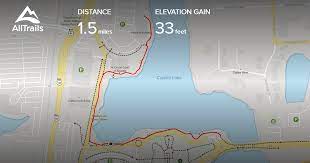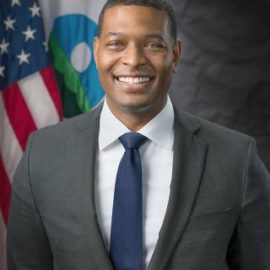
The governor wants the Capital Lakes put on the Superfund looking for funding to clean it up.
Gov. John Bel Edwards has asked the federal Environmental Protection Agency to add the contaminated Capitol Lakes to the agency’s Superfund National Priorities List, a move that would make the site eligible for federal cleanup funds. The letter was the last step needed for the EPA to add the lakes to the list in March, which will be a year after the state Department of Environmental Quality first asked the federal agency to consider taking the step after it reversed a 2002 decision that the lakes’ pollution was too low to cause health hazards. The lakes, which can be seen from the windows of the governor’s mansion, have long been contaminated with polychlorinated biphenyls, or PCBs — toxic chemicals once used as oil for electric transformers that have been banned in the U.S. for more than four decades. “The lakes are a wonderful asset for our state, but we have known for quite some time that they have been plagued by pollution,” Edwards said in a news release. “We now have a tremendous opportunity to breathe new life into the lakes that will make them a healthier environment for wildlife that inhabit them and the many people who would use them recreationally.”
nola.com
This not mean they come right now but rather it is on the list.
Once the lakes are added to the list, their eventual cleanup could be funded by a trust fund used to pay for Superfund site cleanups. The federal government would then try to recoup their expenses from parties they determine to be responsible for the contamination. But the process often takes years. For instance, the Bayou Bonfouca creosote waste site in Slidell has been on the list since 1982, and is still attempting to reach cleanup goals set in a 2016 five-year review. An EPA spokesperson said Louisiana also might be required to pay 10% of the cleanup costs, though that also could be reimbursed.

(Photo by Keith Horn, DEQ)
The EPA has been testing the water.
During four days in April, EPA contractors collected sediment and fish samples from the lakes in downtown Baton Rouge that “indicated the presence of PCBs at concentrations above the human food chain cancer risk benchmark,” said John Meyer, acting director of the superfund division in EPA’s Region 6 office in Dallas, in a Nov. 15 letter to DEQ officials that requested the governor’s approval of the listing. During the sampling trip, the contractors, in a small boat, used electronic stunning gear to catch samples of sunfish, smallmouth buffalo and yellow catfish. After finding abandoned barrels “that appeared to cotain a dried tarry or asphaltic material” hidden in thick vegetation on the northwest shoreline of North Capitol Lake, the EPA contractors relocated one of the sediment sampling locations to a spot nearby.

(Photo by Eric Hadwin, Westin Solutions, contractor for EPA)
The lakes have been there since the early 1900’s.
The Capitol Lakes were formed between 1901 and 1908 when Grassie Bayou was dammed near its entrance to the Mississippi River, creating a 4½-square-mile drainage sump in what would become the state capitol area of Baton Rouge. The lakes became a collection area for urban runoff, including drainage from two unnamed canals. The lake drains into the Mississippi River, but only through a pumping station operated by the city of Baton Rouge that is rarely operated. Investigations of pollution problems in the lakes began in the early 1970s. In 1981, an investigation found the Kansas City Southern Railroad to be a source of oil contamination, and additional testing in 1983 identified oily wastewater containing PCBs.

(Photo by Keith Horn, DEQ)
A Westinghouse repair facility is suspect but other culprits also exist.
Some of the PCB contamination was found in a drainage canal next to a Westinghouse Electric Corp. transformer repair facility on Choctaw Drive. But because the use of PCBs was ubiquitous in the 1970s, a number of other sources have long been suspected. A 2018 state water quality report said that in additiion to the Westinghouse site, possible contamination sources could include the Louisiana Division of Administration Surplus Property Yard, a U.S. Government Surplus Property Yard, and the Louisiana National Guard Armory, all located east of Capitol Lakes. By the end of 1986, Westinghouse had removed PCB-contaminated soils from its property and took other actions to limit runoff into the lake. But sampling since then has repeatedly found PCB levels significant enough to cause concerns. While DEQ issued a statement of “no further action” in June 2002 after concluding levels would continue to decline in both soils and fish, both the Louisiana Department of Health and the DEQ have kept in place a ban on consuming fish from the lake. That ban was reaffirmed through additional fish sampling in 1994 and 2018.

(Photo by Keith Horn, DEQ)
The EPA has already started the investigation into who did it.
In May and August, as part of its investigation into whether to add the site to the Superfund list, EPA sent questionnaires to several of the federal, state and local agencies suspected of having facilities with contamination, and to at least two of the companies that owned properties that were believed to be contamination sites. The questionnaires probe the entities about the use of PCBs or other oil and chemical contaminants at their sites, the PCBs’ possible release, and any cleanup efforts or legal agreements involving the contamination. Those letters were sent to: Paramount Global, the national media company that is a successor to Westinghouse Electric Co. DEQ entered into a settlement agreement with Viacom, now Paramount, in 2003, in which the company paid $161,000 to pay for response and remediation costs, Kansas City Southern Railway Co., concerning its railyard operations at 1402 Foss St. in Baton Rouge. The questionnaire asks about spillage of PCB-laden hydraulic fluid from heavy equipment at the site, and during the storage or handling of oil, including during repairs, at the site, City of Baton Rouge, concerning buildings at 329, 333, 339 and 345 Chippewa St., now used as the city’s fleet service center, where PCB-contaminated wastes were believed to have ended up in the lakes, Louisiana Department of Transportation and Development, concerning a warehouse building at 1701 N. 17th St. in Baton Rouge. In its letter, EPA said it was unsuccessful in identifying the owner of that property, but a call to the Department of Transportation’ Bridge Maintenance Division indicated the agency had operated at that site “for as long as he could remember.” , Louisiana Property Assistance Agency concerning its fleet/vehicle section operating at 1502 N. 17th St., in Baton Rouge. The letter said the request for information also includes the property at 1701 N. 17th St., which EPA has also targeted as possibly being owned by the state Department of Transportation, Louisiana Federal Property Assistance Agency, part of the Division of Administration, concerning its property at 1635 Foss St. in Baton Rouge, which has long been used to store portable generators and other emergency equipment and The general counsel for the U.S. Army, concerning the present U.S. Army Reserve Center, 1735 Foss St., where a ditch behind its mechanic shop drains into the lake.

An angler fly-fishing on the north shore of Capitol Lake near Interstate 110 on October 26. Signs warn against eating fish caught in the lake because of contamination. (Photo by Kori Blitch, DEQ)
Louisiana has almost half of the sites on the Superfund list.
There are 13 Louisiana sites on the National Priorities List, out of 27 that are still listed as Superfund sites by EPA. The ones no longer on the list are considered to have been cleaned up to federal standards and are in “post-closure” status.
The younger generation does not realize that we grew up with PCB’s as they were everywhere.



